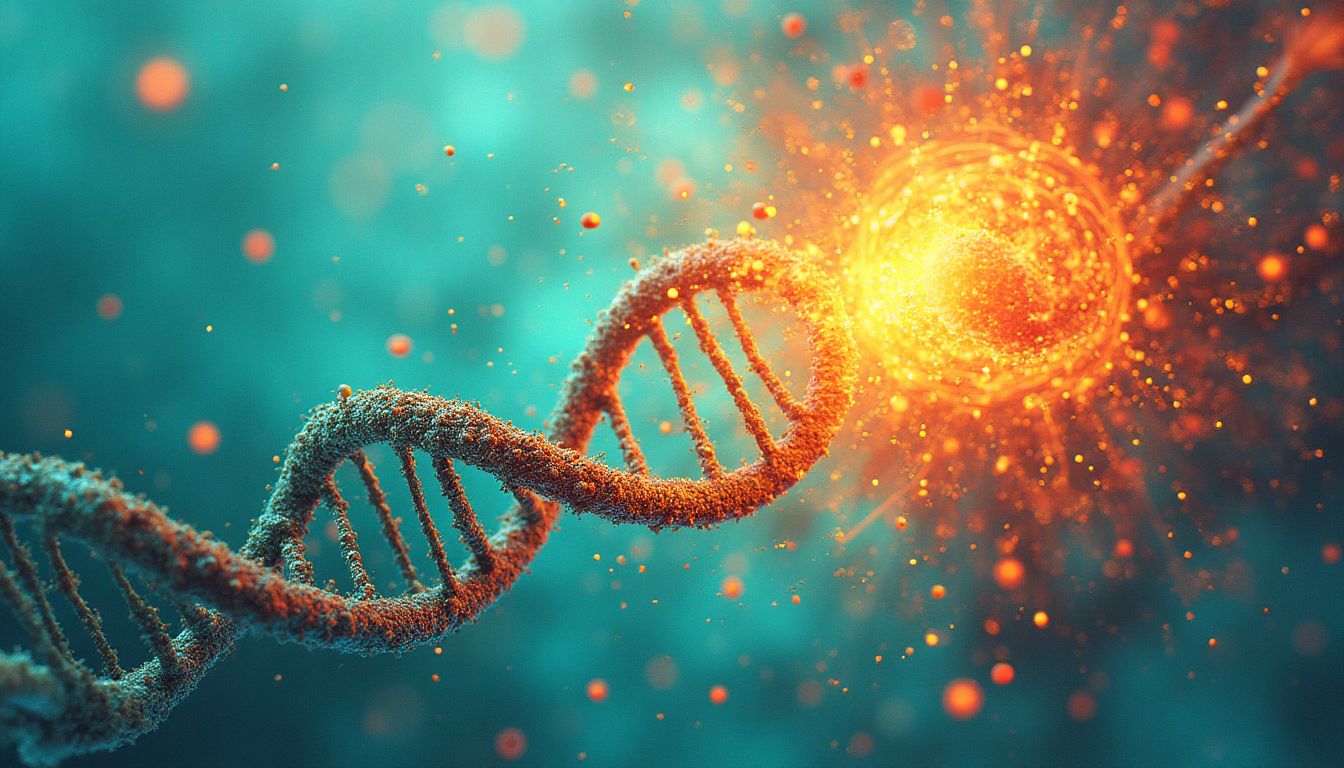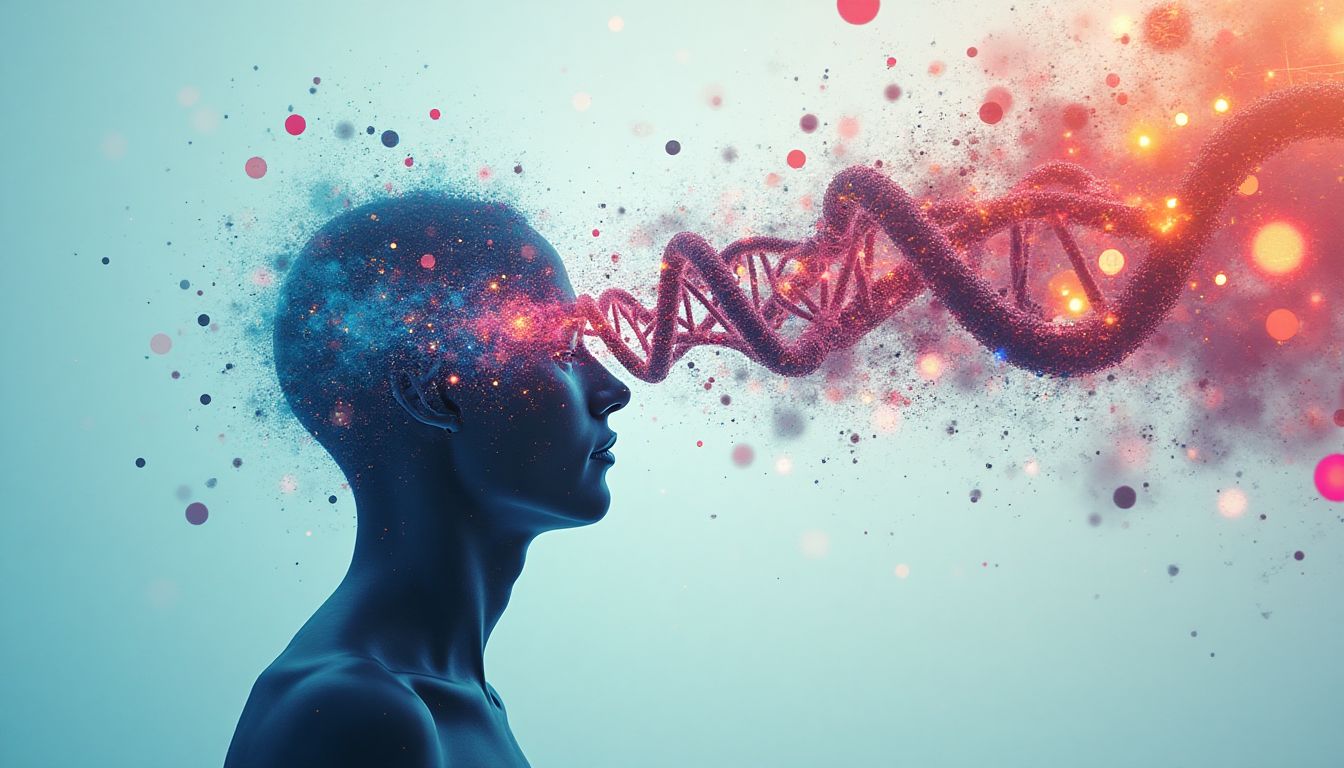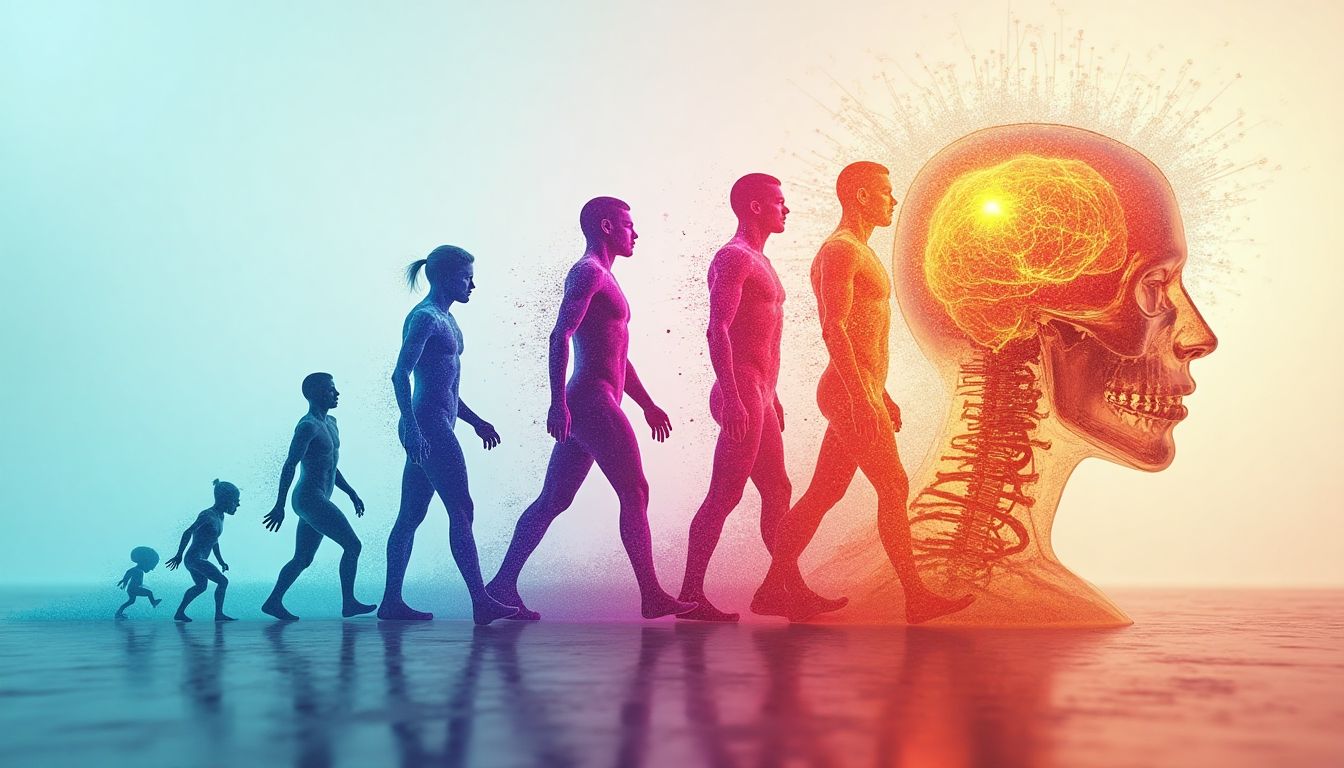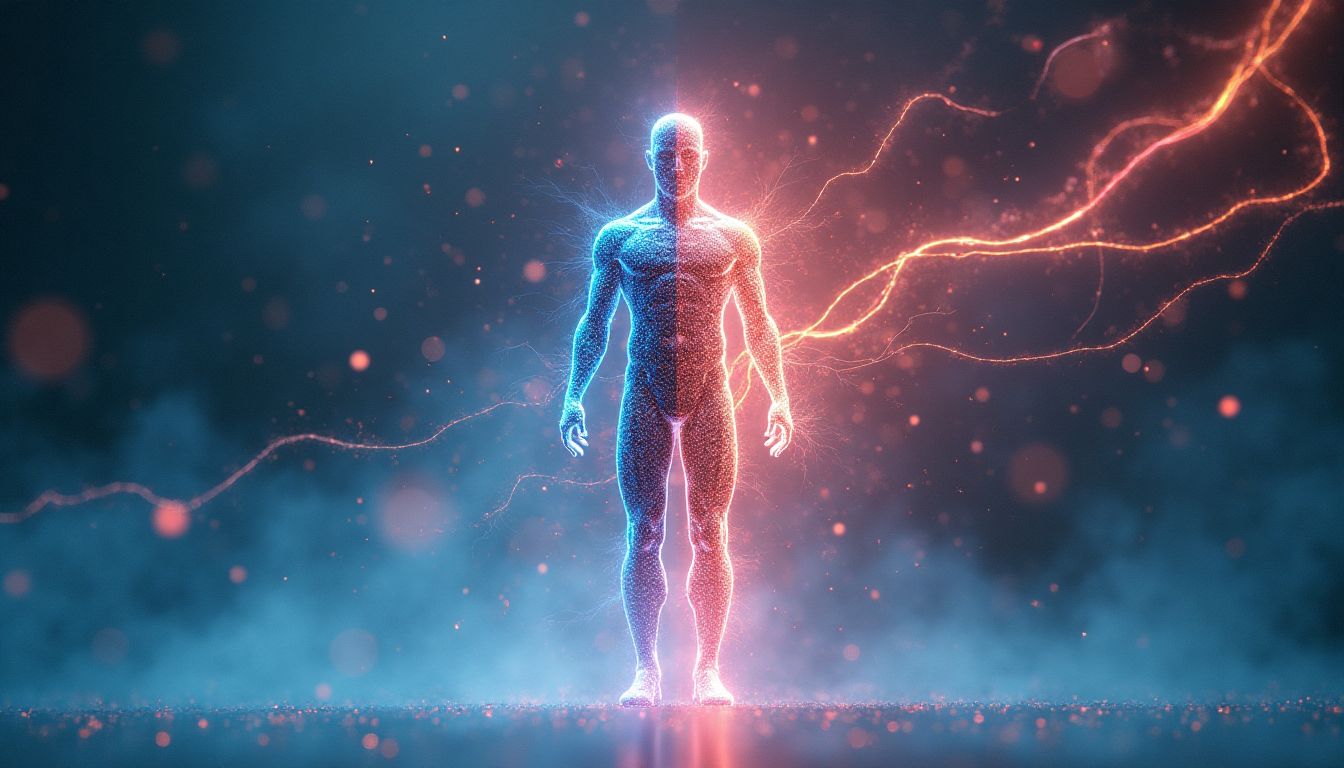Introduction
The measure of intelligence is the ability to change. This insightful statement from Albert Einstein captures the essence of our era. In today's world, Artificial Intelligence (AI) and genetic engineering are not just changing us—they are changing our very definition of humanity. With AI poised to guide us into a new realm of evolution, can we transform into something beyond human? This question isn't just speculative fiction—it is rapidly becoming our reality.
As we explore the potential magic of AI, we must wonder: are we the masters of our fate, or mere passengers on a fast-moving train toward an unknown destination? The intersection of technology and human biology is no longer a distant dream but a tangible frontier. Renowned thinkers like Ray Kurzweil and Yuval Noah Harari have discussed expanding human capabilities through technology, urging us to consider how we harness these immense powers responsibly.
This article delves into the heart of AI-enhanced evolution, from genetic enhancements to brain-computer interfaces, and asks: will machines help us transition into a new kind of superhuman, or will they lead us into an ethical labyrinth that we are ill-prepared to navigate?
The Science of Genetic Enhancements
To understand how AI can usher in a new age of genetic enhancements, we need to journey into the microscopic world of DNA. Genetics is like the blueprint of life, and with technologies like CRISPR, we are learning to rewrite it with astonishing precision. Imagine your DNA as a book. In the past, we could only read it, but now, we're writing new chapters.
Enter AI. The power of AI lies in its ability to predict, analyze, and synthesize enormous data sets. When applied to genetics, AI can help us identify which parts of our DNA could be tweaked to improve physical features or fight diseases. It's a bit like having a super-smart editor for our genetic book, one who knows exactly which words to change or remove to make the best version of ourselves.
The Role of CRISPR
CRISPR-Cas9 technology has given scientists a pair of molecular scissors to cut and modify the genetic code. This means we can precisely edit genes, much like how a text editor allows you to change words. AI enhances this by analyzing genetic variations, predicting outcomes, and suggesting the best possible edits to achieve the desired result. It's like adding turbo to those molecular scissors, making them super-efficient.
Embracing AI-driven methods, the possibilities seem endless. We could potentially eliminate hereditary diseases, enhance physical prowess, or even tweak cognitive faculties. It's as if we've gained access to cheat codes of the human body.
Future Prospects of Gene Therapy
The future of gene therapy is set to change dramatically with AI's involvement. Imagine a world where you can tailor your genetic code like a bespoke suit, designed to perfection. Through AI, we can foresee a time when genetic modifications are not just reactive—curing diseases—but proactive, enhancing our health and longevity from the get-go.
By tailoring our genes, AI opens doors to potentially extending lifespan, boosting our immune systems, and enhancing mental acuity. With AI leading the charge, our vision of health morphs from treatment-focused to enhancement-centric. But, as with all revolutionary tools, it requires a seatbelt—ethical checks and balances—to ensure it's used for good.
Brain-Computer Interfaces: Bridging Humanity and Technology
Welcome to the dazzling world of Brain-Computer Interfaces (BCIs) where the fusion of human consciousness and machine prowess is not just a pipe dream but an exhilarating reality. With these fantastic devices, we're talking about a whole new level of cognitive enhancement and communication. It's a bit like giving your brain a direct hotline to the world of technology. The question isn't just "Can we?" but rather, "How far can we push these boundaries?"
How BCIs Work
If you've ever wished you could control things with your mind (move over, Professor X), BCIs might just be your ticket to the future. These neural implants work by reading and interpreting your brain's signals. Want to turn on the lights just by thinking about it? That might actually be possible. The trick is in translating your thoughts into computer commands. No magic wands needed—just cutting-edge science. Companies like Neuralink are leading the charge, showing us what happens when the realm of science fiction edges closer to reality.
Ethical Implications of BCIs
As thrilling as BCIs sound, they come with a hefty load of ethical luggage. We're talking big questions, much bigger than the kind you face before coffee. Like, what happens to personal identity when your thoughts can be read or altered? What about privacy? How will society handle individuals potentially seeing life as a 24/7 sci-fi flick? The implications are mind-boggling and might require some serious thought (ironically, without a computer's help). And let’s not forget autonomy—will we maintain control, or will we merely be at the mercy of our self-crafted brain augmentations? Compounding these questions is the challenge of incorporating enhanced individuals into a society that still operates largely within traditional bounds. In this rapidly evolving realm, the debate is as lively as it is essential, pressing us to ponder not just "Can we?" but also "Should we?"
The Role of AI in Enhancing Human Performance
When it comes to unlocking the secrets of human performance, AI is akin to a Christmas morning miracle. Through the sheer power of massive datasets, AI offers insights that could potentially drive enhancements across numerous domains. It's like having a personal team of trainers, nutritionists, and motivational speakers united in one powerful algorithmic force.
AI-Driven Fitness and Nutrition
Gone are the days of guessing which workout routine might finally reveal those abs hiding beneath layers of "comfort food." With AI, fitness programs become a truly personalized experience, crafting optimal training regimens tailored to you. It's almost like your personal fitness genie—but without the questionable fashion choices. Personalized dietary plans add another layer of expertise, optimizing nutritional intake to match fitness goals and personal health needs. Imagine an AI-driven plan so finely tuned it transforms chips into your personal kryptonite—though we can't promise it will beg your forgiveness when you cave in to temptation. Wink.
Cognitive Training and Learning Enhancements
On the intellectual front, AI’s talent for crafting individualized cognitive training is like having Einstein as your personal tutor—minus the legendary hair. AI can enhance memory retention and make learning as efficient as possible, creating a new wave of superhuman intellectuals. Through tailored programs, individuals could potentially unlock Einstein levels of intellect, alongside a few curious quirks—though perhaps AI will let us skip the frizzy locks. Companies like Lumosity are forging the way with cognitive training programs that promise to keep our synapses firing at their finest, potentially leading to the rise of a newly evolved intellectual elite.
Social Dynamics: Are We Ready for Superhumans?
The thought of superhumans roaming our streets is both thrilling and daunting. Imagine boasting enhanced cognitive abilities or superior physical strength while sipping your morning coffee. Yet, beneath this dazzling future lies a bubbling cauldron of social challenges. Prepare yourself, dear reader, for a journey into the heart of how society might grapple with—and, indeed, adapt to—the advent of the superhuman.
The Divide: Enhanced vs. Non-enhanced
Picture this: a world where genetic enhancements are as common as smartphones. But here's the twist—would everyone have access to these upgrades? The reality is, enhancements may only be attainable for those who can afford them. Enter the potential divide of the "haves" and "have-nots."
- Access and Inequality: Much like other technologies, the wealthy could access enhancements first, widening societal gaps.
- Societal Tensions: Jealousies and conflicts may rise between enhanced individuals and those without enhancements.
- Potential Solutions: Implementing policies for equitable access to enhancements could bridge some of these divides.
This division transcends mere genetics; it could redefine social structures, creating new hierarchies based on the possessors of biologically bestowed privileges.
Societal Adaptation to New Norms
How would you feel living in a world where humans routinely upgrade themselves? Would you embrace or reject these new norms? The answer requires an inspection of how society might evolve alongside its augmented members.
Adapting to enhanced humans isn't just about acceptance; it's about reshaping society. Consider:
- Labor Markets: Workforce dynamics might shift as enhanced cognition or physical abilities redefine productivity.
- Education Systems: Schools could offer curricula tailored to enhanced and non-enhanced students alike.
- Laws and Ethics: New regulations need crafting to govern rights and responsibilities in a superhuman world.
Will we cherish this brave new world or resist the changes it brings? The choice is collective, but the impact is profoundly personal. Erasing the line between human and enhanced might take us beyond science fiction novels and usher us into an era ripe with potential, yet fraught with challenges.
Ethical Challenges and Regulatory Frameworks
With promises of advancements come responsibilities. The responsibility to ensure that artificial intelligence is wielded wisely and ethically. Imagine the power to redefine humanity—a power nestled within the extraordinary possibilities summoned by AI-enhanced evolution. Yet, how do we wield such power without losing our moral compass? Prepare for an expedition into a landscape where ethics meets innovation.
Defining Consent and Autonomy
"To enhance or not to enhance?" This question assumes immense importance in the corridors of ethical deliberations. It begs us to ponder: Who gets to decide, and how should these decisions empower individuals rather than constrain them?
Consent, often a cornerstone of ethical behavior, poses profound questions:
| Aspect | Consideration |
|---|---|
| Informed Consent: | Ensuring that individuals fully understand the implications of enhancements. |
| Autonomy: | Empowering individuals to have control over their bodies, free from coercion. |
With power comes a responsibility to navigate the interconnectedness of human rights and technological advancements. It's about ensuring that each step leads us closer to dignity rather than divides.
Global Collaboration on Regulations
Enter the conference rooms buzzing with conversations about global governance. In this space, where cultures and traditions intertwine, the importance of harmonious collaborations becomes paramount.
- Establishing international standards for genetic enhancements.
- Involving ethical and cultural considerations in drafting policies.
- Regularizing AI applications across borders to ensure consistent application of ethical protocols.
Global collaboration, reminiscent of a symphony orchestra, requires continuous harmonization of regulations. It ensures resonant progress while safeguarding against the dissonance of inequality and ethical breeches. Here's a call to imagine a unified community, where guardrails are in place before we step too far onto uncharted shores.
In the intersection of ethics and evolution, the path forward is ours to carve. Let's embark, then, on this journey—mitigating risks, fostering hope, and capturing the essence of humanity in an AI-enhanced future.
AI Solutions: How would AI tackle this issue?
Artificial Intelligence (AI) possesses the incredible potential to transform our understanding and approach to human enhancements. By harnessing its analytical power, AI can dissect the complexities of genetic data and assist in the development of advanced technologies that help humankind tread new territories. Here’s how AI could help shape the future of human evolution:
Step-by-step, AI could:
- Conduct comprehensive analyses of genetic data to identify enhancement possibilities: Machine learning algorithms can sift through massive datasets to pinpoint genetic variations associated with desired traits, thus paving the way for targeted interventions.
- Utilize predictive algorithms to forecast potential health outcomes from genetic modifications: By employing models of genetic pathways, AI can estimate how certain changes might influence health indicators, providing a safety net before any physical interventions occur.
- Simulate brain-computer interface interactions to enhance their effectiveness and safety: Through advanced simulations, researchers can anticipate outcomes, minimizing risks associated with BCI technologies and fine-tuning them for optimal performance.
- Facilitate ethical discussions by monitoring public sentiment and pushing for transparency at all levels of enhancement technologies: AI's ability to analyze social media and other public platforms enables a real-time assessment of ethical concerns, helping organizations respond swiftly to societal apprehensions.
The journey towards AI-enhanced evolution is not just about technology; it's about a comprehensive approach to its integration within society. A labyrinth of possibilities awaits, but this will also require careful navigation, drawing on insights from prestigious institutions like [MIT Media Lab](https://www.media.mit.edu/) and [Stanford University](https://www.stanford.edu/) that provide invaluable datasets and ethically driven research frameworks.
Now, let's propose a Roadmap that can guide various institutions, organizations, or governments through the steps required to embrace AI-enhanced human evolution effectively.
Day-by-Day Plan for AI-Enhanced Evolution
Day 1: Assemble a multidisciplinary team of geneticists, AI experts, ethicists, and sociologists. Start with a kickoff meeting to set objectives and outline initial goals.
Day 2: Conduct a literature review on current advancements concerning CRISPR and AI applications in genetic research, utilizing data from reputable sources such as the [National Institutes of Health](https://www.nih.gov/) to inform your work.
Day 3: Initiate data collection on genetic diversity and the prevalence of genetic diseases within the population samples. This should include outreach to organizations such as [23andMe](https://www.23andme.com/) for anonymous genetic data donations.
Day 4-5: Organize workshops aimed at educating staff and stakeholders about the ethical implications of genetic enhancements. Involve professionals from ethics boards and institutions like the [Harvard University](https://www.harvard.edu/) bioethics department.
Weekly Goals
Week 1: Establish communication between team members while outlining the project timeline. Identify potential ethical dilemmas associated with enhancement technologies, taking input from community forums and online surveys.
Week 2: Conduct public engagement efforts to gather feedback on proposed enhancements. Start preparing educational materials about genetic engineering, drawing inspiration from existing resources at organizations such as the [American Genetic Association](https://www.genetics.org/).
Week 3: Begin simulations of genetic modifications using AI algorithms. Gather preliminary results to refine research focus—add periodic meetings for updates and brainstorming sessions.
Monthly Milestones
Month 1: Complete the initial round of AI simulations and share findings with the broader scientific community on platforms like ResearchGate. Gather insights and adjust research focus based on feedback.
Month 2: Host a conference to address the ethical, social, and scientific implications of AI-enhanced evolution, inviting global experts and stakeholders for a discussion. Aim for wide coverage on platforms like [TED](https://www.ted.com/) to extend audience reach.
Month 3: Develop frameworks for responsible AI use in genetic enhancements, informed by public input and expert feedback, with the potential of rolling this framework out via collaborations with [The World Health Organization](https://www.who.int/).
Yearly Vision
Year 1: Finalize a prototype for a brain-computer interface that integrates AI to enhance cognitive ability, preparing for pilot-testing in controlled environments.
Year 1.5: Begin clinical trials for genetic enhancements. Document results carefully, assessing both health impacts and cognitive changes while maintaining transparency with affected communities.
Year 2: Public release of findings with enhancements available to select participants. Release comprehensive reports documenting the social and ethical consequences of these innovations, ensuring that stakeholder concerns are thoroughly addressed.
Conclusion: The Future at Our Fingertips
The future of human evolution is a canvas that AI is beginning to paint. As we look ahead, the merging of artificial intelligence with human capability presents us with boundless opportunities that were once confined to the realms of science fiction. The dance between genetic enhancements, brain-computer interfaces, and thoughtful ethical considerations provokes us to interrogate what makes us human. It’s a daunting yet exhilarating prospect that begs the question: are we ready to embrace such radical transformations or will fear tether us to the past? Our evolution is in our hands. The choices we make now may very well determine the course of our species for generations to come. So, as we stand at the crossroads of biology and technology, let’s step forward, equipped not just with knowledge, but with the courage to shape a future that aligns with our greatest hopes. After all, the question is not if we will become superhuman, but how we will navigate the breathtaking journey to get there.
FAQ
- What is AI-enhanced evolution?
- AI-enhanced evolution is about using artificial intelligence to help and speed up how humans change and grow biologically. This includes altering genes and connecting our brains to computers to improve our abilities.
- How can AI improve genetic enhancements?
- AI can look at a lot of genetic information to find out which changes are good for us. It can also guess what the results will be from changing genes, making these processes easier and safer.
- What are brain-computer interfaces?
- Brain-computer interfaces (BCIs) are tools that link our brains to computers. They allow people to communicate directly with machines, which could help improve brain functions and make communication easier.
- What ethical concerns surround AI-enhanced evolution?
- Some worries include:
- Will only rich people get enhancements, leading to inequality?
- How do we make sure people understand what they're choosing when they get enhancements?
- Could these technologies be used for bad purposes?
- Will AI make us superhuman?
- AI has a lot of potential to help us become better at things, but if we become superhuman will depend on how we decide to use these technologies and whether society is ready for them.
- Where can I learn more about AI and genetic enhancement?
- You can find more information at reputable sites like World Health Organization, and University of Washington which conduct research in these areas.
- How do genetic enhancements work?
- Genetic enhancements work by using technology like CRISPR, which can accurately change parts of our DNA. This means we might prevent illnesses or even improve traits, thanks to advanced gene-editing tools.
- Are there any risks involved with brain-computer interfaces?
- Yes, there are some risks including possible health issues from having implants in the brain. Privacy concerns are also important because other people might access our thoughts.
- What is the potential impact of social dynamics with superhumans?
- If some people become enhanced, we might see social divides where some people have advantages over others. It’s important for everyone to discuss these changes and find ways to include everyone.
Wait! There's more...check out our gripping short story that continues the journey: The Threads of Her Future
Disclaimer: This article may contain affiliate links. If you click on these links and make a purchase, we may receive a commission at no additional cost to you. Our recommendations and reviews are always independent and objective, aiming to provide you with the best information and resources.
Get Exclusive Stories, Photos, Art & Offers - Subscribe Today!





























Post Comment
You must be logged in to post a comment.